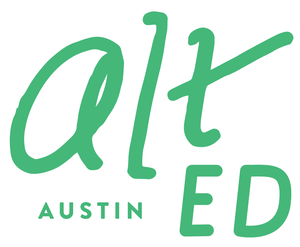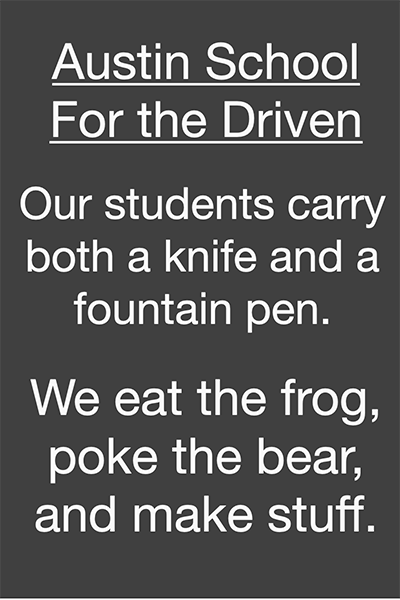Computer science is integral to a strong education
/Lisa Zapalac is one of the co-owners of Long-View Micro School, an innovative new school in Austin that has a strong STEM focus. Lisa’s background in schools is extensive, as she has served as a principal, curriculum director, and teacher, working in both private and public schools, from preschool to high school. She is a dedicated proponent of early computer science and coding instruction and sees the results daily at Long-View.
We teach all children to write, but we don’t expect them all to necessarily become writers. In a world in which computing is ubiquitous and drives innovation in nearly every industry, it is important that we teach our children from an early age how to harness what is called “computational thinking.” Computer science is the broad area in which much of this would be taught to children, and computer science is now foundational to a strong education, right alongside reading, mathematics, science, and writing.
All kids will not end up as computer scientists, though we want many more to make that choice, as 71% of all new jobs in STEM are in computing and only 8% of STEM graduates are in computer science. However, most of our children will eventually find their jobs or their passions crossing over with computing. Whether they someday own a small business and recognize an app would accelerate revenue or they become a biologist who sees that the application of statistics, mathematics, and computer science holds the key to relations among several biological systems, computer science is key to being broadly educated and ensuring choice in future career pathways. This is sometimes referred to as the “double-deep” mandate, as the workforce will increasingly require sets of skills within technology and a secondary area, such as business, medicine, or sales.
Computer science is not just about sitting at a computer and coding. One might think of the relationship between arithmetic and mathematics (there is so much more to mathematics than only arithmetic!) when understanding coding and computer science. When taught properly, computer science will challenge students and teach them to approach problems in new and rigorous ways. It will stretch their logical thinking skills, and help them develop mindsets such as being curious and flexible. The core concepts and big ideas of computer science are broadly transferable, as CS is a discipline just like history, physics, or mathematics. It has a body of knowledge, and the thinking skills of the discipline will last students a lifetime. And there is ample evidence that the discipline of computer science is accessible to children in elementary school and onward.
What does it look like for young children to engage in a computer science class? Yesterday I watched a third grader, with a little bit of extra time on her hands, decide to challenge herself to code something she’d learned in math that day. She set forth to figure out how she’d write a program that allowed the user to consider two sets of numbers and then find the intersection of the two sets.
The third grader’s first thought was, “I don’t really know how to do that. The only thing I know for sure is that I can start with a print statement.” Using her knowledge of Python, she coded a few lines that would print onto the screen both sets of numbers, with six elements in each set. She then iterated her code by adding a line asking the user to consider both sets and then enter the value that represented the intersection of the two sets. After a peer tried out the fledgling program, the hard-working young computer scientist realized she had a problem to solve. What if the user inputted the wrong answer? How could she add to her program so the computer would respond by telling the user the answer was incorrect, and then allow for a new answer to be inputted?
The logical thinking and problem solving terrain that this young eight-year-old traversed, while also having to leverage her beginning knowledge of Python, is nothing short of remarkable. First and foremost, she was a curious learner who sought intellectual challenge. She found a starting point and had the stamina to continue breaking apart her problem. She was able to simultaneously think about the user’s experiences, the set theory she learned about in mathematics, and the coding language to which she’d been newly introduced. What a thinker!
As Jeannette Wing, Professor of Computer Science at Carnegie Mellon and VP of Microsoft Research, wrote in her seminal article in 2006, computational thinking “represents a universally applicable attitude and skill.” Her vision helped inspire innovation across the world, with England, as an example, leading as the first country to mandate computer programming instruction in primary and secondary schools. President Obama signed the U.S. education law called “Every Student Succeeds” and with it recognized computer science as a “critical academic field.” Our children live in a digital world, and we need to prepare them for the digital world by ensuring a baseline understanding. Computer science should be part of every child’s education experience.
Lisa Zapalac





















